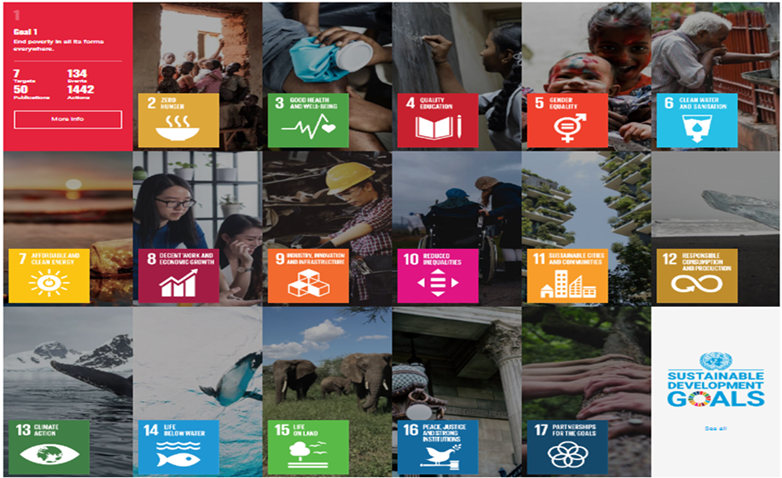Centre for Sustainable Finance and Private Wealth (Singapore) ◈
Juliana Koh1, Marla Lise ◈
The Genesis of ESG and UNSDGS
Sustainable investing is here to stay. The genesis of the age-old idea of responsible investing was seeded by the Quakers in the 1700s. They showcased their commitment to social justice and peace by supporting good causes with their investments.
By the 2000s, ESG and sustainability movements had evolved significantly. Market data agencies like MSCI and ESG specialists such as Sustainalytics began rating firms on their ESG performance. The term ESG was coined in 2004 by the UN Global Compact in their “Who Cares Wins” report, reflecting a shift from Socially Responsible Investing (SRI) and Corporate Social Responsibility (CSR) to a broader focus on sustainability.
This was moved along with the introduction of the United Nations Principles for Responsible Investment (UNPRI), which promoted a set of principles and guidelines to encourage and pave the way for large institutional investors focusing on financial returns to also use a set of responsible investing guidelines to incorporate ESG issues in their investment decision making process. The ESG movement is further supported by companies disclosing ESG information as UNPRI signatories and the public availability of ESG rating of firms.
The UNSDGs, adopted by the UN in 2015, go beyond ESG integration to ensure sustainable development that meets current needs without compromising future generations, following the Brundtland definition. They serve as a roadmap for peace and prosperity for people and the environment, aiming to achieve the 2030 Sustainable Development plan. These 17 interrelated goals, adopted by 193 countries, focus on social, environmental, and economic sustainability, laying the foundation for a sustainable world, living, and business.

THE COMPONENTS OF ESG AND UNSDGs
The E of “ESG”: Environment
The “Environmental” component of ESG focuses on how a company manages its impact on the planet, such as energy use, waste management, and climate change mitigation. It considers resource and emissions reduction and product innovation to bring about desired environmental outcome. The Paris Agreement of limiting the rise in global temperature to 1.5 degree has been a key driving force in the climate change ecological movement. Issues like climate risk, biodiversity and natural resource pressure and circular economy are relevant for many sectors
Biodiversity has been identified as a major driver of our planetary system’s collapse. Though very often overlooked in the corporate world, sustainable management of forests, halting biodiversity loss, and ensuring the sustainable use of terrestrial ecosystems are now crucial components in companies’ ESG frameworks. Similarly, a reduced pressure on resources and a more circular, rather than linear economy, with proper waste management is highly material in relevant industries. Investors are also integrating climate and environmental risk and opportunities in investment assessment.
Relevant SDGs:
- Goal 6: Clean Water and Sanitation: Aligns with water usage, conservation, and pollution control.
- Goal 7: Affordable and Clean Energy: Supports the transition to renewable energy and increasing energy efficiency.
- Goal 12: Responsible Consumption and Production: Encourages sustainable resource use and waste management.
- Goal 13: Climate Action: Directly linked to a company’s efforts in reducing carbon emissions and fighting climate change.
- Goal 14: Life Below Water: Relates to managing impacts on oceans, pollution, and marine biodiversity.
- Goal 15: Life on Land: Ties to biodiversity, deforestation, and land degradation management.
The “S” of ESG: Social
The “Social” component focuses on how a company manages its relationships with employees, customers, and communities, covering issues like labour practices, diversity, and human rights. With the social impact mind, organizations should prioritize employment quality, health & safety, training & development, diversity, and community. Long-term profitability depends on the wellbeing of all stakeholders, including employees, customers, and suppliers. Transparency is crucial to ensure supply chains are monitored, audited, and regulated to prevent hidden human rights violations.
Relevant SDGs:
- Goal 1: No Poverty: Encourages poverty reduction through fair wages and community investment.
- Goal 3: Good Health and Well-Being: Aligns with ensuring safe working conditions and promoting employee health.
- Goal 4: Quality Education: Linked to employee development and skills training.
• Goal 5: Gender Equality: Focuses on gender diversity, equal opportunities, and anti-discrimination policies. - Goal 8: Decent Work and Economic Growth: Promotes fair labour practices, decent working conditions, and economic growth.
- Goal 10: Reduced Inequality: Linked to social inclusion, diversity, and equality in workplaces and communities.
The “G” of ESG: Governance
The “Governance” component looks at a company’s leadership, ethics, transparency, and how it manages risks and compliance. The companies’ board structure, diversity and functions, shareholder rights, and compensation policy underpins good governance, impacting the companies’ ability to pursue environmental and social goals. These are highly material and influences investor’s financial analysis of the firm. On a macro level, governance relates with broader public, private partnerships to achieve sustainable development and the role of global institutions for peace and justice.
Relevant SDGs:
- Goal 16: Peace, Justice, and Strong Institutions: Focuses on governance structures, anti-corruption efforts, and ensuring accountability and transparency.
- Goal 17: Partnerships for the Goals: Encourages collaboration between sectors, highlighting the importance of partnerships for achieving sustainable development, including public-private cooperation and transparency.
PROS AND CONS OF UNSDGs
The establishment of the UNSDG framework has garnered both support and criticism. Supporters of the framework view the framework as providing a universal common ground that encourages international cooperation across countries, organizations, and sectors. This unified approach helps align efforts toward common global challenges like poverty, climate change, and inequality. A unified approach is especially necessary given the global scale of sustainability-related challenges. The 17 UNSDGs also cover a wide range of interconnected issues, from health and education to environmental sustainability and economic growth. This holistic perspective ensures that progress in one area does not come at the expense of another, fostering a more integrated approach to development.
However, the creation of the UNSDGs is not without criticism. Critics argue that while the SDGs set ambitious targets, there is no binding mechanism for holding countries accountable for their progress. This can lead to uneven commitment, where some nations or actors fall short in meeting the goals despite international agreements. Achieving the SDGs requires substantial financial investment, resources, and infrastructure. Many developing nations face significant challenges in mobilizing the necessary resources, which can hinder their ability to fully implement the framework and achieve the targets. Ultimately, the UNSDGs can be seen as ideal goals that require substantial contributions from all parties involved, without which, would be mere targets that do not result in actual change.
HOW CAN WE USE UNSDGS?
As we embark on this new era of impact and sustainable development, reflect on how your business, investments, philanthropy, activism, advocacy, work, and consumption align with your identity, values, and the impact you wish to make.
ESGs and UNSDGs are frameworks to guide us and provide the headwinds to drive social and environmental impact and change. The UNSDGs helps you to align your investments, business activities, and impact needs with sustainable practices, around the pillars of environment, social and governance.
For Investors:
Sustainable investing is a process of traditional investment viewed through an ESG lens and ethical considerations. The UN’s 17 SDGs, covering various ESG dimensions, can guide theme selection.
We all care about something. Using the UN SDG will empower you with a simple communication tool.
- A framework for the family to share, talk and align what you care about and how you feel about what the world needs.
- A platform for you and your financial advisors to discuss what is important to you.
Besides identification of themes, the UN SDGs can also guide investors to flesh out the needs and outcomes around that theme. It also helps you to identify the specific metrics or indicators to use to track the impact of your investments.
It is important to note that ESG is a LENS through which we view companies and/or investments. It is NOT a product. This approach requires you to consider and integrate data about the ESG-related risks and opportunities of firms, sectors and themes when you make your investment decisions. Investors can assess the ESG performance of companies and invest in those that demonstrate strong practices in areas that align with the SDGs.
For Businesses:
Similarly, businesses may use the UNSDGs to guide their ESG involvement and impact, and metrics and measurements for impact. Within your family business, Identify and evaluate any potential synergies of your impact ambition with existing business portfolios, operations, models, and innovations. Consider their relation to your family business’s products, services, targets, and sectors in a systemic investing approach.
ESG RATINGS
There are many rating companies which you can pay to assess your EGS rating. Some of these include, Morning Star, MSCI, and Sustainalytics. However, the quality of measurements is very much based on the quality of the data given and various challenge may add to discrepancies in the ESG ratings. It is important to note that when using ESG ratings to assess ESG performance.
Challenges to ESG Ratings:
- Comparability of underlying data: different sectors, geography and culture, different accounting measures across rating companies.
- Issues in underlying data: non-disclosure, data scarcity and incompleteness.
- Materiality and judgement challenges; inconsistent, difficult and uncertain judgements.
- Divergence in ESG ratings: scope of coverage (environment, social or governance), differences and lack of standardisation in measurement (e.g. units, scope of coverage) and different weights.
Looking beyond ESG rating to impact. And then seek to assess, rather than measure the impact of investment. This involves consider impact counterfactuals like “What happens to the world if I take an action? What will happen to the world if I do not take this action?” Note that impact is highly unequally distributed and that every action has an opportunity cost. Considering whether given your limited time, energy, assets and financial resources – is this the most impactful opportunity you can have? Is it a loving thing to do? Is it life giving? If YES – Do all things well and wait no more. The call is NOW!
1Juliana Koh is the Head of Research, at the Centre for Sustainable Finance and Private Wealth (Singapore)
Learn more about the United Nations’ Sustainable Development Goals, and ESG rating methodologies in CSP SG’s Applied Sustainable Investing in Wealth Management courses, available at both a L3 (introductory) and L4 (intermediate) level.








